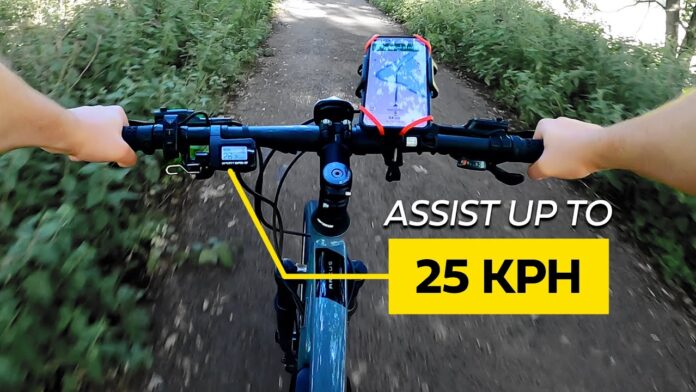There’s a quiet revolution zipping along bike lanes around the world, and if you’ve found yourself stuck behind a puffing cyclist up a hill—or maybe you are that puffing cyclist—you’ve probably wondered: are electric bikes actually worth it? Spoiler alert: they might just be the best thing to happen to personal transport since the skateboard.
Let’s dive in, shall we? This isn’t your typical product review or listicle. This is a boots-on-the-ground, pedal-to-the-metal account of what it’s really like to own and ride an electric bike in 2024.
🚲 The Rise of the Electric Bike
Before we get into the nuts and bolts, let’s talk numbers.
In 2020, Americans bought nearly twice as many electric bikes as electric cars. That’s a telling stat. While Teslas make headlines, e-bikes are quietly becoming the real electric revolution for everyday folks.
So, what’s the appeal? Why are more and more people opting for these battery-powered two-wheelers?
Here’s the deal: speed, support, flexibility—and let’s be honest—they look pretty damn cool.
🛠 What Even Is an E-Bike?
There’s a bit of confusion around e-bikes. In the UK (and similarly here in Australia), there are a few categories, but the most common one is what’s known as an Electrically Assisted Pedal Cycle (EAPC).
These are pedal-assist bikes, meaning the motor only kicks in when you pedal. It doesn’t do the work for you; it just gives you a push. Think of it like cycling with a really strong tailwind all the time.
- No rego needed
- No licence required
- No road tax or insurance (though insurance is a smart idea)
The catch? The motor has to be 250 watts or less and will only assist you up to 25 km/h. After that, it’s all up to your legs (or gravity).
🔋 The Battery Question: Can It Go the Distance?
Ah yes, the elephant in the room—range anxiety.
One Youtuber Simon Clark tested the Ridgeback Arcus 1, a budget-friendly model sitting at around £1,170 (roughly AUD $2,200). It claims a 50 km range, and that got put to the test on a round trip from Bath to Bristol and back.
The route? Hilly, scenic, and not particularly forgiving.
The result? It made the 50 km with juice to spare—despite the final leg being a brutal uphill climb.
So yes, if you’re not riding like you’re in the Tour de France, most e-bikes will comfortably get you where you need to go.
⚙️ What’s It Like to Ride One?
In a word? Fun.
You start pedalling, and after about a half-turn of the crank, the motor kicks in. It’s not like a sudden jolt—it’s more like being pulled forward gently, almost like you’re being towed by an invisible string.
On flat ground? You cruise.
On hills? You grin.
At traffic lights? You launch ahead of cars with zero stress.
And when you switch off the assist? Oh boy. That’s when you realise how much help the motor was giving you. One flick of a button, and it’s like someone dropped a sack of bricks into your panniers.
🏞 Hills Are No Longer the Enemy
Let’s talk about hills for a sec. In places like Bath—or pretty much any hilly Aussie suburb—you might’ve looked at that slope and gone, “Nope. I’ll walk.”
But with an e-bike? You still feel the incline, but it’s like flattening a mountain into a molehill.
You’ll still work a bit—your legs won’t just go along for the ride—but that horrible burning sensation that makes you question your life choices? Gone.
Even infamous climbs like Ralph Allen Drive (a kilometre-long hill with a 100m height gain) suddenly feel manageable. Not effortless, but not a punishment either.
💰 Let’s Talk About Cost (And If It’s Worth It)
Sure, you can buy a cheap pushbike for a hundred bucks. But an e-bike? You’re looking at around $1,500 to $3,000 for something reliable.
That might sting upfront, but here’s the thing:
- No petrol costs
- No rego or licence
- No need to pay for parking
- Less wear and tear than a car
And in terms of running cost? Charging the battery works out to less than a cent per kilometre. That’s cheaper than walking (if you factor in the calories you burn and have to replace with food!).
🏃♂️ But Is It Still Exercise?
Some people call e-bikes “cheating”. To them, it’s not “real cycling”.
Let’s set the record straight: You’re still pedalling. You’re still using your legs. You’re just getting a bit of help.
And that little bit of assistance? It makes you ride more often, go further, and tackle routes you’d never consider on a regular bike.
That means, overall, you get more exercise, not less.
Tour de France winners ride e-bikes for their everyday errands. If it’s good enough for them, it’s probably not cheating.
🧠 E-Bike = Freedom
One of the most underrated things about electric bikes? They give you flexibility.
You’re not boxed into a one-size-fits-all approach to cycling. You can:
- Use high support to climb a hill
- Switch it off on the flat
- Conserve battery on long trips
You get to dial in the experience, which makes commuting smarter and travelling feel more like an adventure than a chore.
😬 Are There Any Downsides?
Of course. No product is perfect. Here are a few cons worth noting:
- Upfront cost – They’re pricier than a regular bike.
- Weight – E-bikes are heavy. Carrying one upstairs isn’t fun.
- Environmental impact of batteries – Lithium and rare earth mining isn’t great for the planet.
- Battery lifespan – You’ll eventually need to replace it.
Still, when weighed against the positives, these are manageable issues.
🧪 Road-Tested and Approved
Youtuber Simon Clark took the Ridgeback Arcus 1 on a 50 km real-world test ride with hills, detours, and even a bit of off-road action (cheers Google Maps for that one).
It handled it all like a champ. Even with battery support dialled down most of the way, there was enough charge left to tackle the final monster hill home. And when it did drop to 10%, the bike still powered through.
Bottom line? It did what it promised—and more.
🚗 Not Just a Bike Replacement—A Car Replacement
Here’s the biggest takeaway: e-bikes aren’t just for replacing your old pushbike. They can actually replace your second car.
Think about your day-to-day travel. Short trips to work, the shops, the café—how many of those really require a car?
With panniers or a backpack, you can carry groceries. With fenders and lights, you can ride in the rain. With decent tyres, you can even take gravel paths.
For urban commuting, they’re basically the cheat code to getting around quickly, cheaply, and without showing up to the office looking like you just ran a marathon.
🌍 The Future of Transport?
Electric bikes aren’t a fad—they’re a fundamental shift in how we think about personal travel. Alongside electric cars, planes, and boats, they’re helping reshape cities and reduce our reliance on fossil fuels.
Whether you’re an eco-warrior, a budget-conscious commuter, or just someone who hates arriving at work sweaty, e-bikes are the future.
And in the case of Simon’s journey? The e-bike didn’t just meet expectations—it smashed them.
Final Verdict: Are E-Bikes Worth It?
In one word? Absolutely.
They’re practical, fun, eco-friendly, and surprisingly cost-effective. They make hills feel like flats and turn tedious commutes into joyrides.
More importantly, they make you want to ride more—and that’s really the point.
If you’ve been on the fence, consider this your nudge. Go for a test ride, find a model that suits your needs, and give it a go.
You might just find yourself wondering why you didn’t do it sooner.






Ebikes are amazing !
Tip: Having a removable battery is the ability to carry a spare in a backpack or pannier, and be able to swap out on longer journeys.
I love my ebike, I ride a lot more and I go a lot further and I am getting more fit, not less. I ride to work and back. I go places where I normally would not and I enjoy it so much, it is adult playing.
I use an e bike for mountain biking rather than commuting and it’s an absolute game changer
People should consider selling their car if it’s not use frequently, replacing it with an electric bike or even an electric cargo bike.
Please don’t leave e-bike batteries charging overnight. Charge them while you’re awake.
They are great as long as you have a safe place to keep it.